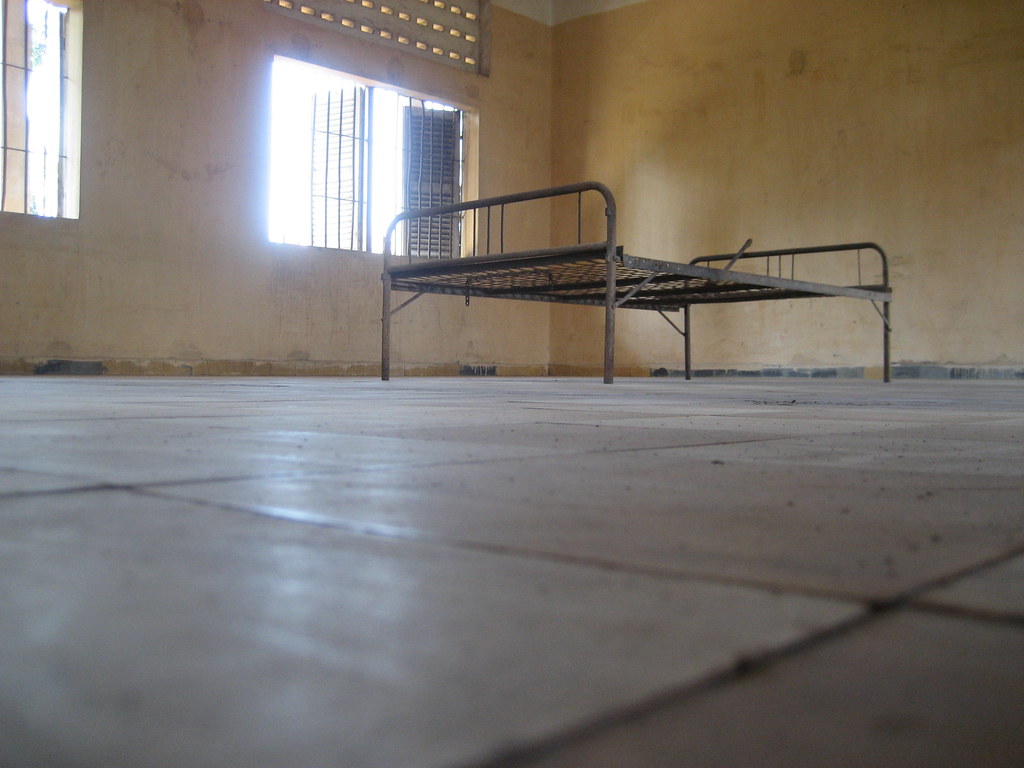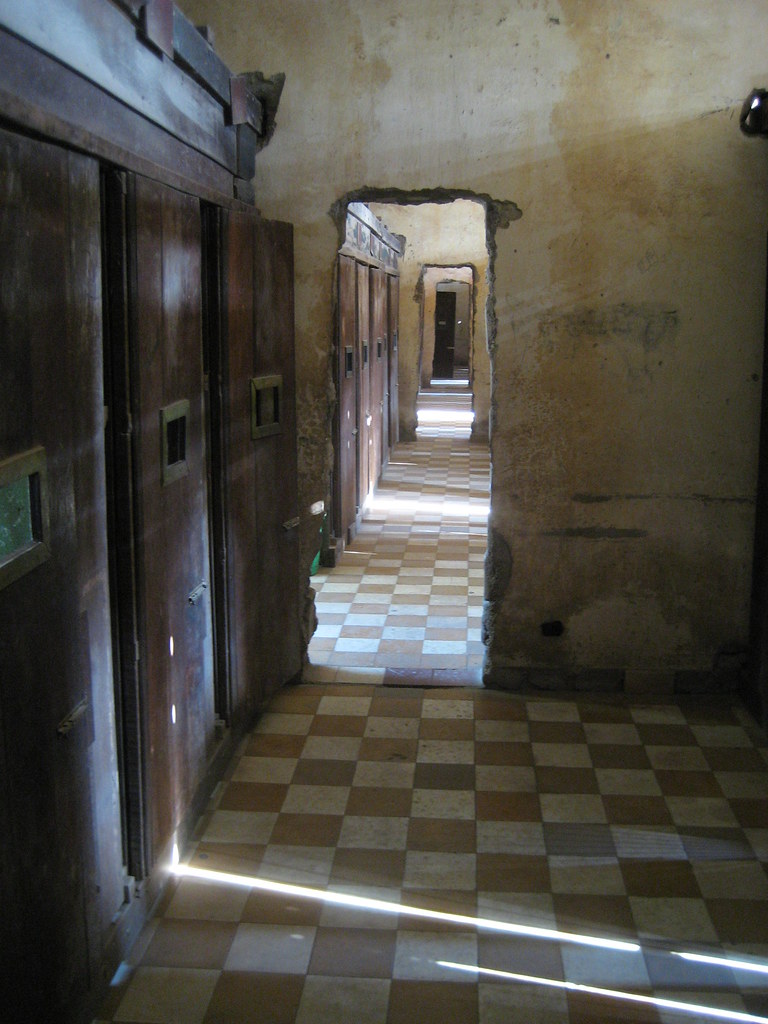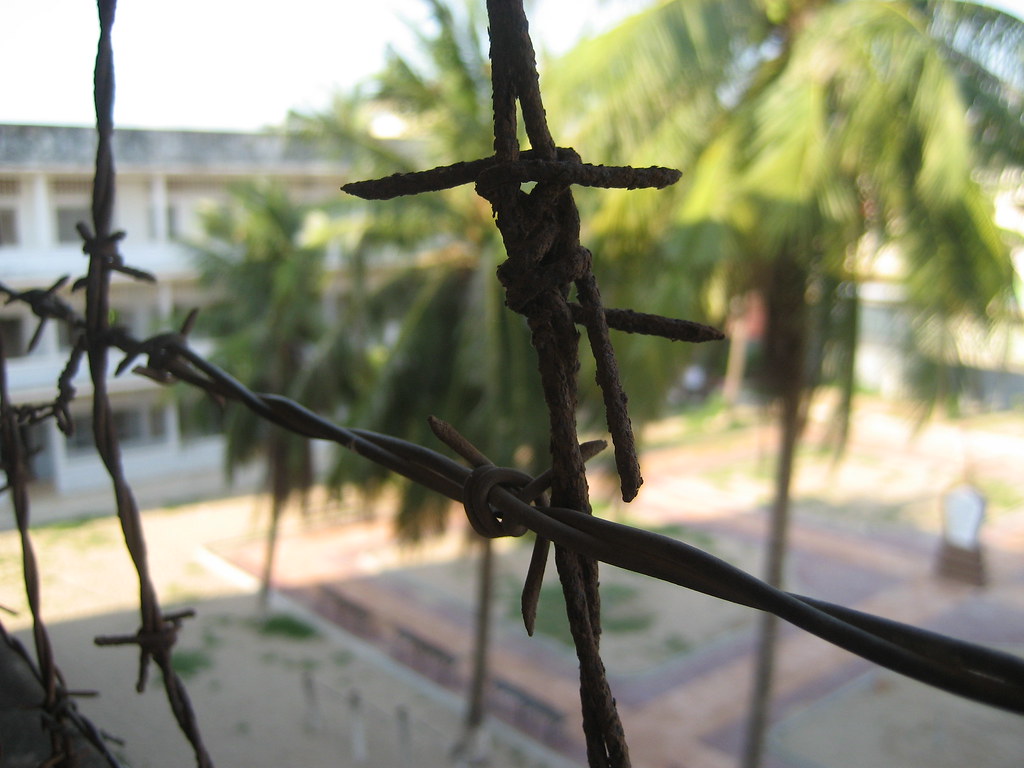"To keep you is no benefit. To destroy you is no loss."
Cambodia is a country that has economically fallen behind its neighbours due to years of internal strife. Its a country that is trying to get back onto its feet, driven by textiles, tourism and potentially, resources. We found the people to be positive; focused on creating a future that they see around them in Vietnam and Thailand. They have a long way to go. Years of zero investment coupled with rampant corruption make for challenging times ahead.
We spent a few days exploring Phnom Penh. Last time Dee was here she whistled through on the way to Siem Reap, so this time we wanted to get under its skin a bit more. After Vietnam some things took a bit of adapting to. The local food borrows from its neighbours and is heavy on fish and rice. The beer is strong and expensive (although that would be the case for any country after Vietnam) with a big plus being they have a good range of local stouts. Overall the streets are a bit dirtier and dustier with homeless families occupying some corners. With the focus of the downtown area being the riverfront, most of the traveller bars and hangouts line the promenade. There are some beautiful buildings, particularly the Royal Palace and the National Museum and some more sobering tourist sites like Tuol Sleng.
We spent a few days exploring Phnom Penh. Last time Dee was here she whistled through on the way to Siem Reap, so this time we wanted to get under its skin a bit more. After Vietnam some things took a bit of adapting to. The local food borrows from its neighbours and is heavy on fish and rice. The beer is strong and expensive (although that would be the case for any country after Vietnam) with a big plus being they have a good range of local stouts. Overall the streets are a bit dirtier and dustier with homeless families occupying some corners. With the focus of the downtown area being the riverfront, most of the traveller bars and hangouts line the promenade. There are some beautiful buildings, particularly the Royal Palace and the National Museum and some more sobering tourist sites like Tuol Sleng.
The Khmer Rouge was the ruling political party in Cambodia between 1975 and 1979. In those 4 years they left a scar on their country which today is not openly discussed, but will certainly never be forgotten.
From Wikipedia:
In power, the Khmer Rouge carried out a radical program that included isolating the country from foreign influence, closing schools, hospitals and factories, abolishing banking, financecurrency, outlawing all religions, confiscating all private property and relocating people from urban areas to collective farms where forced labor was widespread. The purpose of this policy was to turn Cambodians into "New People" through agricultural labor. These actions resulted in massive deaths through executions, work exhaustion, illness, and starvation.
The Tuol Sleng Genocide Museum is a former high school turned security prison located in central Phnom Penh. In it's few years of operation it saw an estimated 17,000 political prisoners enter its doors. There were seven known survivors, kept alive for their useful skills.
Tuol Sleng was is linked to the infamous Choeung Ek killing fields, some 17km's out of town. The Museum is presented in the 4 blocks of the old school buildings. Rooms used for interrogation complete with instruments of torture and photos of how the rooms were found by the Vietnamese liberators occupy one three storey block.

The Khmer captors kept meticulous records including photos and extracted biographies from their prisoners. Boards of these photos taken on arrival at the prison are displayed in the second block. Thousands of black and white photos. The third block has the cells, some brick, some wooden and group rooms where hundreds of people were chained together unable to move.

The final block houses displays; skulls, photos, artwork and a film room. Stories of the Khmer captors, their lives now and then also feature.

The Khmer captors kept meticulous records including photos and extracted biographies from their prisoners. Boards of these photos taken on arrival at the prison are displayed in the second block. Thousands of black and white photos. The third block has the cells, some brick, some wooden and group rooms where hundreds of people were chained together unable to move.

The final block houses displays; skulls, photos, artwork and a film room. Stories of the Khmer captors, their lives now and then also feature.

The impact of Tuol Sleng on the visitor is dramatic, made even more so by the fact this occurred in our lifetime and many of the perpetrators have yet to be brought to justice.


1 comments:
Chilling...
-Imran
Post a Comment